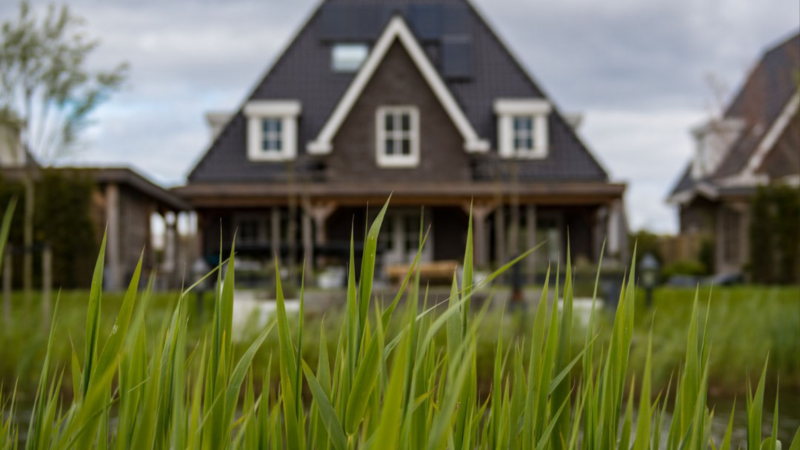|
Housing Markets Continue to Confound
The housing markets in both Alabama and the U.S. continue to confound analysts, offering mixed signals as far as the future course of the economy is concerned, according to Dr. Leonard Zumpano, director of the Alabama Real Estate Research and Education Center at The University of Alabama.
“This is certainly true at the state level,” Zumpano said. “Total existing homes sold in August stepped up 3.3 percent to 3,523 units from 3,408 sold in July. On the other hand, average selling price declined 3.8 percent to $115,473 from $119,864, while average days on the market lengthened slightly from 138 days in July to 144 days in August.”
Zumpano said the number of existing homes sold increased in 11 of the 20 reporting areas and declined in eight. The increase in the number of homes sold coupled with a decline in number of homes listed for sale caused supply to fall to 7.9 months from 8.2 months in July, Zumpano said. All of the year-to-date numbers for 2001, except average selling price are behind last year’s pace, he added.
“Gadsden set a couple of records in August with an all-time high 73 homes sold and an all-time high average selling price of $114,194,” Zumpano said. “Gadsden also saw the second largest percentage increase in number of homes sold with a jump of 30 percent, right behind Morgan County’s 36 percent increase to 145 units from 107. There were a couple of significant jumps in average selling price as well. Gadsden reported a 20 percent increase to $114,194 from $95,563 and Lake Martin saw a 17 percent jump to $209,618.”
Zumpano said Mobile saw the highest number of homes on the market since the Center began recording the statistic in May of 2000. “This may be coincidental, but it corresponds with the passage of a tax law requiring homeowners to live in their homes 128 days instead of the previous 30 days to qualify for a tax break from the county,” Zumpano said.
According to Zumpano, the mixed numbers suggest a market in search of direction. “The fear is that this direction may be down in the coming months,” he said. He noted that according to the Alabama Department of Industrial Relations, unemployment crept up 0.1 percent in August to a seasonally adjusted 4.7 percent.
While still below the national average of 4.9 percent, the rate is rising. Most of the jobs lost were in residential construction. However, employment problems are still largely confined to the more rural locations, as unemployment rates still remain low in most of the state’s metro areas.
As far as the new home market in Alabama is concerned, according to Zumpano, F.W. Dodge reports that contracts for future residential construction fell 6 percent statewide in August 2001 compared to the same time last year.
“Within Alabama, however, there was a great deal more variation in residential construction contracts than the statewide numbers suggest,” Zumpano said. According to figures released by the Center, contracts for future construction rose by 35 percent in the Tuscaloosa metro area and by 22 percent in Huntsville.
The value of future construction contracts also increased in the Decatur, Dothan, Florence, and the Gadsden metro areas, although the increase was limited to single digits in these locations. The value of future construction contracts fell by 34 percent in the Mobile metro area, which is made up of Mobile and Baldwin counties. Sizeable declines in future residential construction were also reported for the Montgomery and Birmingham metro areas, with both locations down 14 percent from the same time last year.
At the national level, the National Association of REALTORS® reports that sales of existing single-family homes set a record in August with a 5.8 percent increase over the previous month, to a seasonally adjusted annual rate of 5.5 million units. Median sales price jumped 8 percent to $154,700.
New homes sales for the U.S. also increased in August, but the increase was modest at 0.6 percent to a seasonally adjusted rate of 898,000. “Consumers are taking advantage of very attractive interest rates and are continuing to buy homes, but at a slower rate than last year,” Zumpano said. The July sales numbers released by the U.S. Census were revised down from 950,000 to 893,000 units.
Zumpano said the bad news comes from housing starts and construction permits, both indicators of future housing activity. “The Commerce Department reported that housing starts in the U.S. sank 6.9 percent in July to a seasonally adjusted annual rate of 1.53 million units from 1.64 million. This represents the largest drop since March of 2000 and left housing starts at their lowest levels in ten months,” he said.
Construction spending fell 0.1 percent in July after holding steady for six months. Zumpano said construction spending is a leading economic indicator, meaning that changes in construction spending will often precede similar changes in the overall economy. On the bright side, he noted the decline in construction spending was entirely in remodeling and other small categories with new, residential construction actually increasing around 0.5 percent.
The U.S. employment situation eroded again in August with an overall loss of 113,000 non-farm payroll jobs, Zumpano pointed out.
Manufacturing continues to be the hardest hit with the loss of 141,000 jobs in August. Consumer confidence, the only data included in this report that was collected after the September 11 attack, plunged 14.4 percent to 97.6, almost exactly the same decline experienced at the beginning of Desert Storm, according to Zumpano.
On a somewhat more positive note, he said second quarter GDP numbers came in higher than most economists expected, indicating that, at least through the second quarter, the economy had not slipped into recession.
Most of this data was collected before the events of September 11, Zumpano said, adding, “It is a little more difficult to say what will happen now or in the near term. Given the decline in housing starts, the continuing erosion of employment in the manufacturing sector, falling consumer confidence, and the uncertainty in the marketplace; the economy will continue to slow and maybe even post negative growth for the remainder of the year.
“We remain optimistic for the longer-term housing picture, however, and believe that after some short-term market dislocations, the economy will rebound next year. Both the Federal Reserve Board and the federal government are pursuing highly stimulating policies that may spark yet another refinancing boom as well as help bolster lagging consumer spending and the economy as we approach year-end.
EDITORS NOTE: The in-state housing statistics reported here refer only to existing home sales and are obtained from data provided by local area associations of REALTORS®. Consequently, these numbers do not include new home sales, or for-sale-by-owner transactions, and hence, are reflective of basic housing market trends and not indicative of all the monthly housing market transactions that take place within the state. |








 Alabama’s total personal income grew just 4.0 percent between 1999 and 2000, the weakest gain of all 50 states. While this outpaced the year’s 2.4 percent rise in consumer prices, it fell far below the U.S. increase of 7.3 percent. Only seven states had income gains of less than 5 percent from 1999 to 2000. Fast-growing states, like Colorado and California, saw strong increases in net earnings, particularly from manufacturing and services. By contrast, Alabama’s earnings growth was weak in all major industries during 2000. Farm and mining earnings declined, while earnings in manufacturing rose just 1.1 percent. Service-producing industries fared better, although overall sector earnings gains of 5.4 percent were well below the U.S. average of 8.9 percent. Alabama’s income growth improved in the fourth quarter of 2000, when acceleration in personal income growth ranked among the top six states.
Alabama’s total personal income grew just 4.0 percent between 1999 and 2000, the weakest gain of all 50 states. While this outpaced the year’s 2.4 percent rise in consumer prices, it fell far below the U.S. increase of 7.3 percent. Only seven states had income gains of less than 5 percent from 1999 to 2000. Fast-growing states, like Colorado and California, saw strong increases in net earnings, particularly from manufacturing and services. By contrast, Alabama’s earnings growth was weak in all major industries during 2000. Farm and mining earnings declined, while earnings in manufacturing rose just 1.1 percent. Service-producing industries fared better, although overall sector earnings gains of 5.4 percent were well below the U.S. average of 8.9 percent. Alabama’s income growth improved in the fourth quarter of 2000, when acceleration in personal income growth ranked among the top six states.
 In 1999, the latest year for which county per capita income is available, Alabama’s estimated per capita income of $22,972 amounted to 80.5 percent of the U.S. average. Per capita income in Alabama’s 67 counties varied widely, however, as seen in Figure 1. Residents of only two counties, Jefferson and Shelby, had incomes exceeding the U.S. average of $28,546. Another seven counties—Baldwin, Coffee, Houston, Madison, Montgomery, Morgan, and Tuscaloosa—fell below the national but above the state average. In 41 counties, per capita income was below the state but above 65 percent of the U.S. average. Income in Alabama’s 17 poorest counties fell below 65 percent of U.S. per capita income in 1999.
In 1999, the latest year for which county per capita income is available, Alabama’s estimated per capita income of $22,972 amounted to 80.5 percent of the U.S. average. Per capita income in Alabama’s 67 counties varied widely, however, as seen in Figure 1. Residents of only two counties, Jefferson and Shelby, had incomes exceeding the U.S. average of $28,546. Another seven counties—Baldwin, Coffee, Houston, Madison, Montgomery, Morgan, and Tuscaloosa—fell below the national but above the state average. In 41 counties, per capita income was below the state but above 65 percent of the U.S. average. Income in Alabama’s 17 poorest counties fell below 65 percent of U.S. per capita income in 1999. Over the last 31 years, Alabama’s poor counties have generally stayed poor and the rich have stayed rich. Only 11 of the state’s 67 counties have cracked the top six in per capita income during this time, as shown in Table 1. Four counties—Jefferson, Madison, Montgomery, and Morgan—have been there every year; Shelby joined in 1971. Baldwin, which was in the group for a few years in the late 1970s, displaced Houston in the top six in 1996. Many of Alabama’s poorest counties have also been in the cellar for most of the last 31 years. Greene and Perry have always been there; Lowndes, Sumter, and Wilcox have been there well over 20 years, including 1999; and Hale, which spent 27 years in the bottom six, now ranks seventh from the bottom. Macon, also in the bottom six in 1999, has been in the group for about half of the last 31 years, as has Bullock, which was just above, at 60th, in 1999.
Over the last 31 years, Alabama’s poor counties have generally stayed poor and the rich have stayed rich. Only 11 of the state’s 67 counties have cracked the top six in per capita income during this time, as shown in Table 1. Four counties—Jefferson, Madison, Montgomery, and Morgan—have been there every year; Shelby joined in 1971. Baldwin, which was in the group for a few years in the late 1970s, displaced Houston in the top six in 1996. Many of Alabama’s poorest counties have also been in the cellar for most of the last 31 years. Greene and Perry have always been there; Lowndes, Sumter, and Wilcox have been there well over 20 years, including 1999; and Hale, which spent 27 years in the bottom six, now ranks seventh from the bottom. Macon, also in the bottom six in 1999, has been in the group for about half of the last 31 years, as has Bullock, which was just above, at 60th, in 1999. Income Inequality Increasing
Income Inequality Increasing Only by helping her poorest citizens become educated, productive participants in the state’s economy, by developing tax policies that help mitigate the effects of increased income inequality, and by attracting and nurturing higher wage jobs can Alabama pull itself out of the income cellar.
Only by helping her poorest citizens become educated, productive participants in the state’s economy, by developing tax policies that help mitigate the effects of increased income inequality, and by attracting and nurturing higher wage jobs can Alabama pull itself out of the income cellar.


